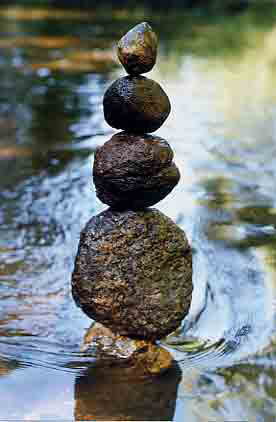Art Review: Phipps Center
Michael Fallon heads south to the Phipps Center in Hudson. What he finds there is a mixed blessing.


On the weekend afternoon that I visit the enigmatic Phipps Center in Hudson, the galleries are all but deserted. There are maybe four other people looking at the art, and the rest of the space outside the galleries is filled with a noisy congregation waiting to see a Phipp’s Children Theater performance of Beauty and the Beast.
This place has a split personality—it has the hometown feel of any small-town community center, even as its three large art galleries are as good a physical space as any within range of the Twin Cities. Its art shows tend to be hit-or-miss.
In the Phipps’ current conglomeration of solo and two-person shows, you have to make your way to the very end of the row of galleries to find the most interesting work. You’ll likely not be enraptured on the way. In Gallery One, Morgan Clifford’s woven wall-hung pieces exhibit good color and beautiful fiber (linen, silk, etc.); the technique is good but that’s about it. They’re nice, all umpteen of them. They’re all about the same size (just right for a cat-blanket), and neatly wall-hung. And that’s about all I can say. If you’re not a big weaving fanatic, you’ll shrug and make your way to Gallery Two.
There, you’ll see a two-person exhibition of simpatico artists—Doug Westendorf, who takes photos of his own site-specific rock sculpture things (think Andy Goldsworthy); and Joel K. Phelps, who carved found pieces of wood (according to gallery info he passed away this past fall) and placed them up against stone native to the North Shore of Lake Superior. Phelps’ work is more intriguing, though it suffers from a lack of diversity in scale and in approach. His work has a reliquary quality: shale with the striations and discolorations of once life-infested muck and mud, and bits of carved wood from once living trees contain the life they once had. Most are good, though with a tendency toward preciousness. They are less than a foot in any dimension, mostly, vitrined and pedestaled.
There are occasional surprising compositional juxtapositions in Phelps’ assemblages—a speckled bit of round stone thrust into the eye-hole of a butterscotch-colored piece of butternut wood; a gnarled, knotted piece of walnut that is more coarse in feel than the stone it rests on. You could put any of these on your meditation altar or in your writing nook–they’re just calm enough to look at every day; they wouldn’t force you to think about them each time you see them.
The walls around Phelps’ sculpture, meanwhile, are filled with dozens of Westendorf’s photos of the cairn-like rock formations he makes in natural settings. Some of the moments in these photos are lovely, though in the end the lack of variation among these dozens of images turns them into background noise.
The same is true of James Michael Lawrence’s work in Gallery Three. His “Echoing Japan” images are a series of digitally manipulated photos–that is, snapshots taken and kaleidoscoped, meat-grindered, and photoshopped into picture-perfect examples of the kind of all-too-colorful and slickly abstract images you find in Photoshop for Dummies and such books. There are a lot of young artists working in this mode these days—using the tools readily available to them, I suppose, in an attempt to forage for new modes of expression. Ostensibly a visual diary of the artist’s time in Japan, it’s unfortunate that the resulting digital pieces look alike—while they’re colorful and boisterous, there’s not much there there; they lack depth and specificity in both expression and visual appeal. After seeing just a few of these images, the eyes glaze over and the question becomes, as with the other three artists: Where is the focus on the singular object?
The last show in this ordeal is the saving grace (though I don’t particularly like its title: “Nictating Membranes”). Charlotte Roth is an intriguing glasswork artist who seems willing to experiment, and to reveal the progress of her experiments. The most mundane and straightforward of her pieces, “Untitled 8” and “Untitled 9,” are sets of small pieces of sculpted glass resting on pedestals. Some of the pieces resemble recognizable shapes—a ballerina figurine’s legs and torso, a martini glass stem, a flattened bell jar, a thick segment of bamboo; and a few others are just blobs.
These conglomerations are not particularly amazing by themselves–think of a glassware shop at a resort town run by a slightly schizophrenic artist–but fortunately she works with this stuff, using the glass bits to make exposures onto photosensitive paper.
The resulting seven images (Untitled 1–7) reveal the shapes of the objects we see on the pedestals, though it takes a while to recognize this. For it’s as if they’ve been gamma-rayed, turned into ghost versions of themselves. The light shining through the glass reveals hidden and surprising things that we can’t see in the object itself. Imperfections in the glass look like muscle fiber, or microscopic insect wings, or details from another dimension. The shapes of the glass take on new meaning when we see them in these images, and the work becomes a comment on perception. Our awareness of the physical reality of these objects is played off our abstract conception of them, and this is intriguing.
The last of the works in the show—three medicine cabinets with glass cast with large central relief objects (an ear, eye, and mouth, respectively)—are less interesting, but follow the artist’s interests in body issues. Opening the cabinets reveals more glass blobs, which is disappointing because they have little compositional or physical connection to the metallic glass on the cabinet fronts. I would have liked to see some of the photograms, or something else more inventive, incorporated into these works—but perhaps next time.